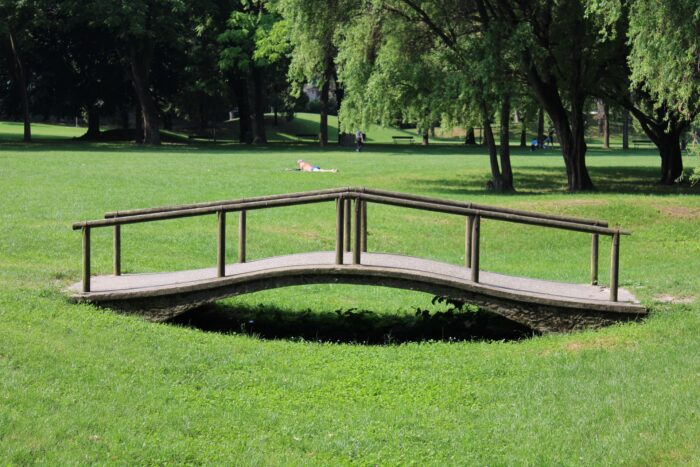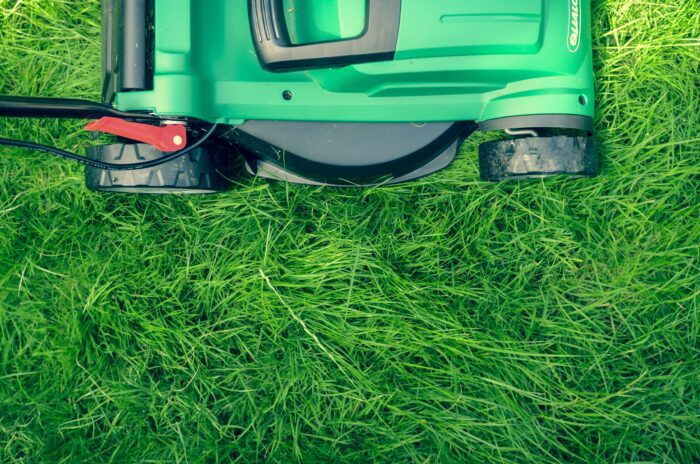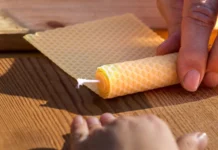
It’s probably impossible to find a person who buys a house and doesn’t want to see a perfect lawn around. The psychology behind a field of green grass says that our brains associate it with tranquility, health, and harmony. That’s why it’s so important to surround yourself with greens inside and outside your house. But let’s focus on the lawn first. The experts from BumperCropTimes.com say that mowing and watering aren’t enough for a perfect result. But what else can you do? Below are the 10 steps that will make you a lawn care professional in less than 10 minutes!
1. Think Out the Garden Layout

If there’s no lawn in your yard yet, or it needs replacement, you should take time to consider the layout of your renovated garden. Answer the following questions:
- What is the shape of your garden?
- How big is it?
- Where do you want to place the new trees? Do you want to remove the old ones?
- What is your garden meant for?
- Do you need plenty of open space for children and pets?
- Do you want a patio?
Knowing the answers to these questions, you can plan where to place every element to make your yard look great and remain functional at the same time. You can visit Outdoor Art Pros for backyard essentials that will help you visualize your design, or you can hire a landscape designer who will develop a project for you.
2. Turf or Seed?
When it comes to bringing your dream lawn to life, you should be able to understand which option is the best for you: turf or seed. Choosing the first option, you receive an instant result that won’t need too much maintenance to settle in. The second has some benefits, too. Although it takes much more time to make it settle in, the final look is always more natural. This option is also a good way to save a bit if needed.
3. Mowing It Right

If you don’t want to remove the old lawn, but wish to make it look better over some time, regular mowing will be needed from March to November, depending on your region. At BumperCrop Times, we always recommend using electric lawnmowers to avoid extensive noise and air pollution in the neighborhood. And here is a detailed mowing schedule for you to stick to every year:
- March – start cutting dry grass with the blade high;
- April – growth rates usually increase this month, so you should mow every 10-14 days;
- May-June – adjust a lower cut and mow once a week;
- July-August – growth rates will slow down, so you can trim once in 1-2 weeks;
- September-October – keep cutting once in 1-2 weeks;
- November – clean out all the autumn leaves and make a final cut of the year;
- Winter – you can cut a couple of times with the blade high if needed, but strictly avoid frosty conditions.
You should also remember:
- Not to cut down over a third of the grass length in a single run;
- Overlap each processed sector while mowing the next one;
- Work very slowly with damp and long grass to avoid damaging it.
4. Prepare the Ground
If the jobs on implementing your lawn are only about to start, read further. Before seeding or laying turf, you should remove any debris from the ground. When it’s clean, take a garden fork to turn the ground over. Finish this step by raking the area to remove air pockets.
5. Feed It

Every lawn requires seasonal feeding with a specialized lawn treatment solution, which you can get on Amazon or any other store. Your feeding schedule should look this way:
- Spring – feed when it becomes warmer and you’ve already mowed 2-3 times;
- Summer – apply the solution in around 12-14 weeks after the spring feeding, but avoid dry weather;
- Autumn – in September (or early in October) apply a special autumn feed solution to give the lawn enough power to remain healthy over the cold months.
Remember! You should always apply the fertilizer right after cutting the grass.
6. Water The Lawn
If the climate in your region requires regular watering for grass, you should water once in a week or two and do it early in the morning to let the water penetrate the soil before the sun evaporates it. Use an online lawn watering calculator to figure out how much water it needs and try to water in 30-minute laps letting it soak the water between the 2 laps. Poor absorption can be caused by compacted soil. It’s time for the next step!
7. Aerate the Soil

Aeration involves making small holes in the lawn surface with a garden fork. They will loosen the soil and let it soak water, oxygen, and nutrients more efficiently. After aeration, make sure to water a bit more frequently, but with a smaller amount of water. This way the water will reach the roots without flooding the lawn.
8. Kill The Weeds
Weeds are highly invasive and may damage the perfect look of your lawn. If you don’t remove them in time, they can invade the entire garden! Start with preventive measures and stick to the previous maintenance steps to make it harder for them to pass. They will sneak in one day no matter how hard you resist. When it happens, identify the weed type and buy a non-chemical weedkiller. If it doesn’t tackle the challenge, get a stronger solution.
9. Protect the Area

Heavy weather and animals can damage parts of the lawn from time to time. While you cannot prevent the first factor, you can prevent the unwanted effects of dog urine. As it burns the grass quite quickly, you should watch your pet when outside and hose the spots every time to dilute the urine and save the grass. If you are good at training your dog, teach it to pee in the same spot every time.
To prevent winter damage, keep removing any debris from the surface, control weeds, aerate the lawn once per winter, and leave the lawn “alone” when it’s cold.
10. Repair It If Needed
Sometimes you may need to replace particular patches of the lawn with new grass. You can get rid of dead grass with a gardening fork, aerate the soil, and reseed the area. Turf patch repair is a bit easier as less maintenance is needed. Just cut a patch with a shovel, rake the soil, put the new layer, and water it every 5-10 days to let it settle in.
Great Lawn is Almost Yours!
Now it’s time to test your knowledge on practice. Of course, you will face many more questions while doing the job, but it will be a very exciting experience for you. Regardless of your lawn’s condition (or even absence), you can use this guide to figure out the right sequence of steps and follow them. Enjoy this job and you will love the result!








